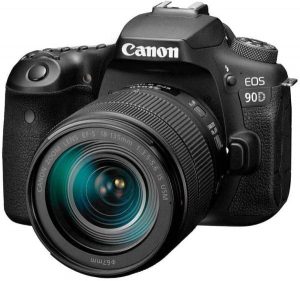The people of the world are becoming more and more consumed by technology. As a result, film photography has been all but forgotten about. This is why I believe that everyone should own a camera – even if they don’t use it often, they’ll be able to have memories captured forever in photos when technology eventually fails us.
Table of Contents
What is a Camera?
A camera is a device that captures light and turns it into an image. The word “camera” comes from the Latin word for the room, camera. A lens focuses light onto a film or digital sensor inside the camera, which records the images. They can be used for a variety of purposes, from taking snapshots to capturing video.
In general, cameras work by using a lens to focus light onto a sensor. The sensor then converts this light into an electrical signal, which is then converted into an image. Today, many cameras also come equipped with features such as autofocus, flash, and zoom lenses. These features make it easier to take clear and well-composed photos and videos.
Cameras come in many sizes and shapes, with different features to suit everyone’s needs. For instance, some cameras are designed specifically for gamers, with high-resolution sensors and the ability to record video in 4K resolution. Other cameras are more basic, with fewer features but a more user-friendly interface.
12 Different Types Of Cameras
There are different types of cameras available in the market. Depending on your purpose, choosing the right type is a must.
DSLR
DSLR stands for Digital Single Lens Reflex Camera. They are the most popular type of camera on the market today. They are loved by professional photographers for their high-quality images and ability to change lenses. DSLRs have a digital imaging sensor that allows you to take amazing photos.
The best part about DSLR cameras is that they come with a detachable lens. This means that you can change the lens based on the type of photography you are doing. For example, if you are taking a picture of a landscape, you would use a different lens than if you were taking a picture of a person. DSLR cameras give you the flexibility to take great photos no matter what the subject is.

This is the perfect DSLR camera for beginners. All the smartest, newest features of Canon cameras are on this affordable package. With an 18-135mm USM lens attached you can take photos without missing a fast-paced moment, and share those 4K videos easily to your friends with built-in Wi-Fi and Bluetooth technology.
The DIGIC 8 Image Processor brings high-quality images that promise to make you more creative than ever before by giving you the versatility to edit and create your own unique creations as they come to life on this Vari-Angle Screen which makes zooming in/out easier than pushing buttons!
Smartphone camera
A smartphone camera can be a very powerful tool in the right hands. Many of today’s phones have capabilities that rival stand-alone cameras, and the best part is that they’re always with you. Some smartphones may have up to 5 cameras on the back while others have just one and they use a digital image sensor.
Whether you’re capturing a spontaneous moment or planning a photo shoot, your smartphone camera can help you get the perfect shot.
One of the most important things to consider when using your smartphone camera is composition. By taking the time to frame your shot carefully, you can vastly improve the overall quality of your photos.
Another helpful tip is to make use of the various shooting modes that are available on most phone cameras. These modes can help you to better control the look and feel of your photos, giving you even more creative control.
With a little practice, you’ll be surprised at what you can achieve with your smartphone camera.
Mirrorless camera
Mirrorless is similar to DSLR cameras, but they do not have an optical viewfinder. In general, this makes them lightweight and more compact.
They also have lenses that can be detached easily, making them great for travel photography. Plus, the absence of a mirror means that mirrorless cameras can be quieter than DSLRs, which is ideal for candid shots.
Bridge camera
If you’re in the market for a new camera, you may be wondering whether to choose a DSLR or a point-and-shoot. But there’s another option that falls between these two types of cameras: the bridge camera.
Bridge cameras typically have a fixed lens that cannot be removed, and they offer a telephoto focal range. As a result, they can be a good choice for photographers who want more control than point-and-shoot offers, but don’t want to deal with the hassle of changing lenses.
Bridge cameras also tend to be smaller and lighter than DSLRs, making them more portable. So if you’re looking for an affordable, versatile camera that’s easy to carry, a bridge camera may be the right choice for you.
Film camera
Though digital cameras have largely replaced film cameras in the past few years, there are still many reasons to keep a film camera around. For one, film cameras often produce higher quality images than digital cameras, especially in low light conditions.
Film cameras force you to slow down and think more about each shot, resulting in fewer wasted photos. And finally, there’s something special about waiting to see your photos developed – it’s a process that can’t be replicated with digital photos.
Point and shoot camera
Point-and-shoot cameras are the most common type of camera you’ll see on the street. They’re used by everyday people who want to capture a moment. These models have a fixed lens, and the focal length may be adjusted using the on-camera controls.
They are easy to use, and they produce great results. Thanks to their simple design, point-and-shoot cameras are also extremely affordable.
Polaroid camera
Polaroid cameras were once extremely popular and for good reason. They allowed people to take a photo and then have it printed instantly. This was convenient for several reasons.
First, it meant that people didn’t have to wait to get their photos developed. Second, it meant that people could share their photos with others right away. And third, it meant that people could see what they had just taken a photo of immediately.
However, Polaroid cameras are now quite rare. This is due in part to the fact that digital cameras have become more popular in recent years. But it’s also because Polaroid stopped making them in 2007.
Medium format camera
A medium format camera is a high-end camera that offers superior image quality to 120mm film cameras. Medium format cameras are often used by professional photographers for a variety of purposes, including weddings, portraits, and landscape photography.
The increased image quality of medium format cameras comes at a price, however; they are typically much more expensive than their 120mm counterparts. For amateur photographers or those on a budget, a 120mm camera may be a better option. However, for those who are serious about photography and are willing to invest in the best equipment, a medium format camera is the way to go.
Digital cine camera
Digital cine cameras are professional devices that offer high video quality. We can see them used for filming documentaries, movies, and more. Their lenses can be easily replaced, making them a versatile option for filmmakers.
However, these cameras are also expensive and large, which can make them difficult to transport and use in tight spaces. For these reasons, digital cine cameras are best suited for professional filmmakers who have the budget and space to accommodate them.
Rugged camera
Rugged cameras are designed to withstand harsh conditions and rough handling. They are often used in extreme sports or outdoor activities, where normal cameras would be easily damaged.
Rugged cameras are typically waterproof and dustproof, and they may also have a shock-resistant casing. This makes them ideal for capturing images and videos in difficult environments. Some rugged cameras even come with built-in GPS, so you can track your location while you’re on the go. Whether you’re shooting photos of a mountain bike race or exploring a remote region, a rugged camera is an essential piece of equipment.
360-degree camera
A 360-degree camera is a digital camera that captures images in all directions, providing a full panoramic view. This type of camera is often used for virtual tours or to create a “photo sphere” that can be viewed on Google Maps.
While some smartphones have 360-degree camera capabilities, dedicated 360-degree cameras offer higher image quality and more features. When choosing a 360-degree camera, it’s important to consider the resolution, field of view, and memory options.
The resolution affects the clarity of the image, while the field of view determines how much of the scene is captured. Memory options dictate how much storage space is available for saving images and videos.
Action camera
Action cameras are designed to capture all the action, whether you’re skiing down a mountain, whitewater rafting, or BASE jumping. They’re usually small and lightweight, with a tough, rubberized, or heavy-duty shell to protect them from the elements.
Many action cameras can be controlled remotely, so you don’t have to be right in the thick of the action to get great shots. You often see action cameras mounted on helmets or other gear worn by athletes and stunt performers.
If you’re looking for an immersive way to record your adventures, an action camera is a way to go.




